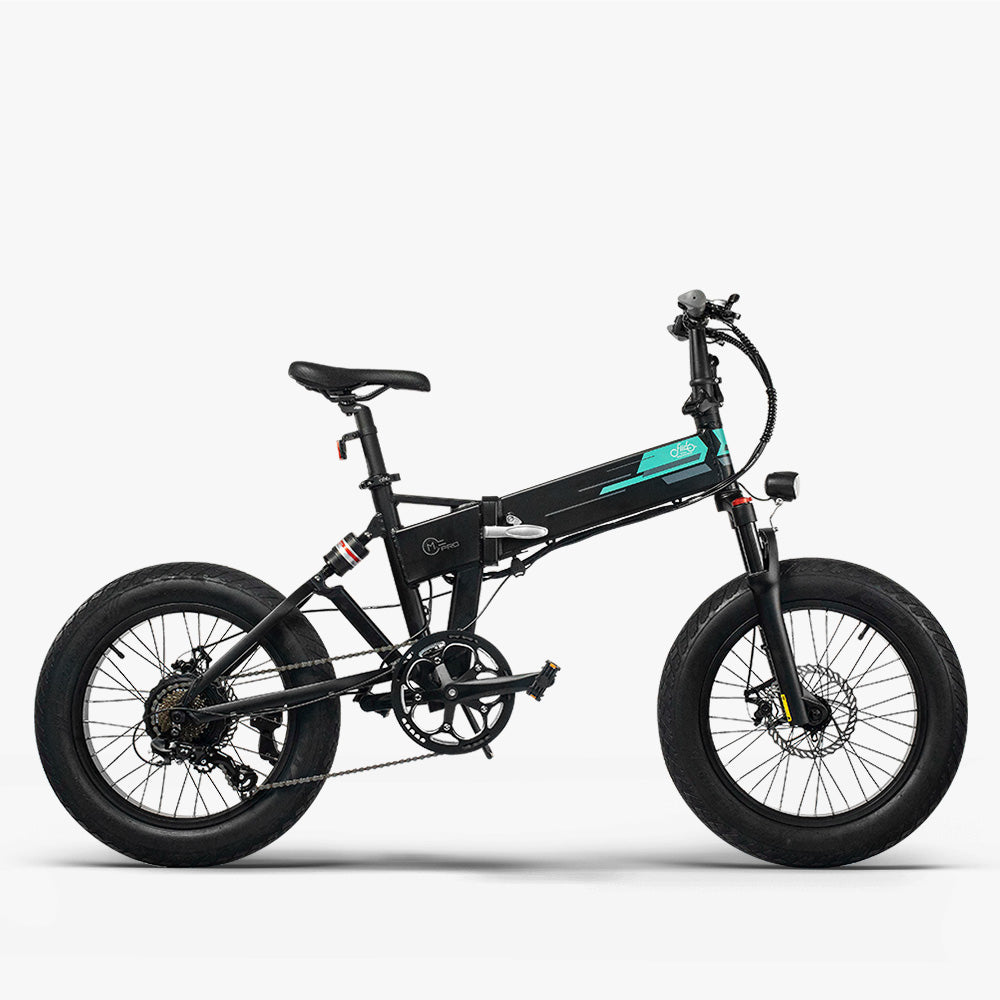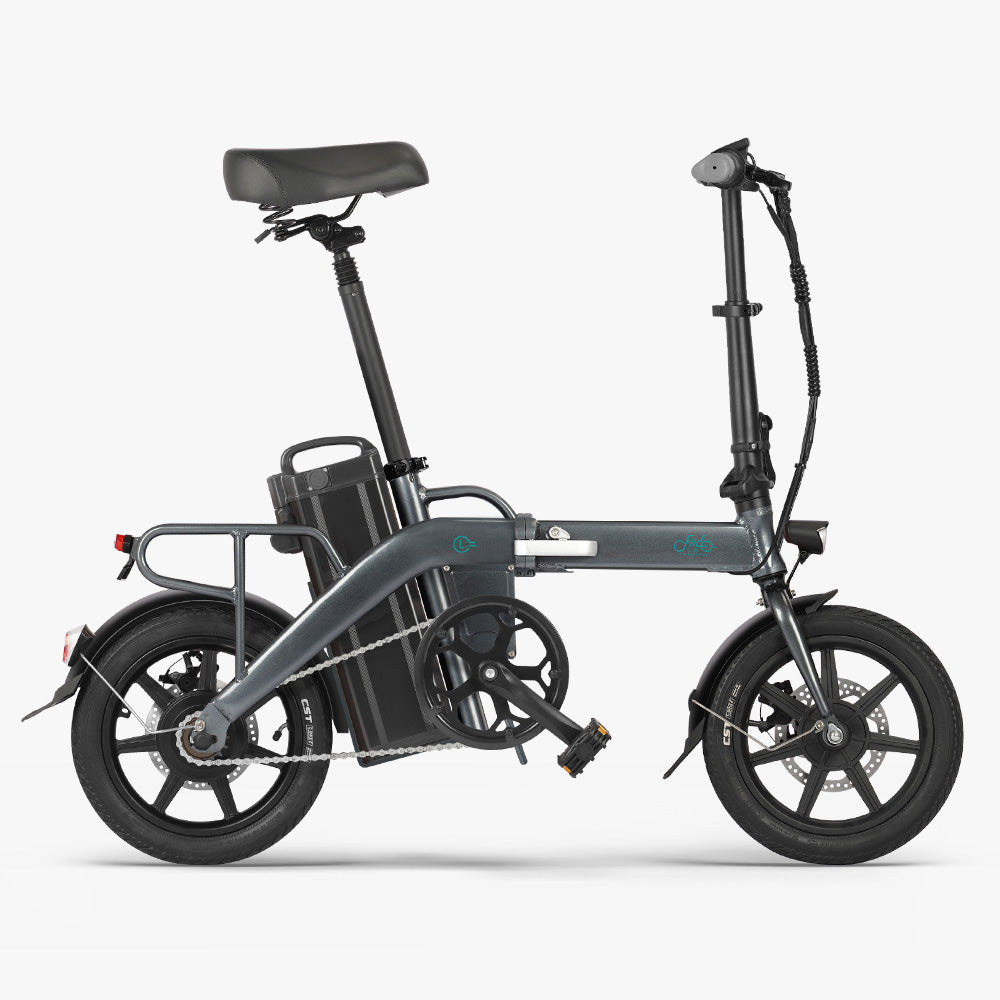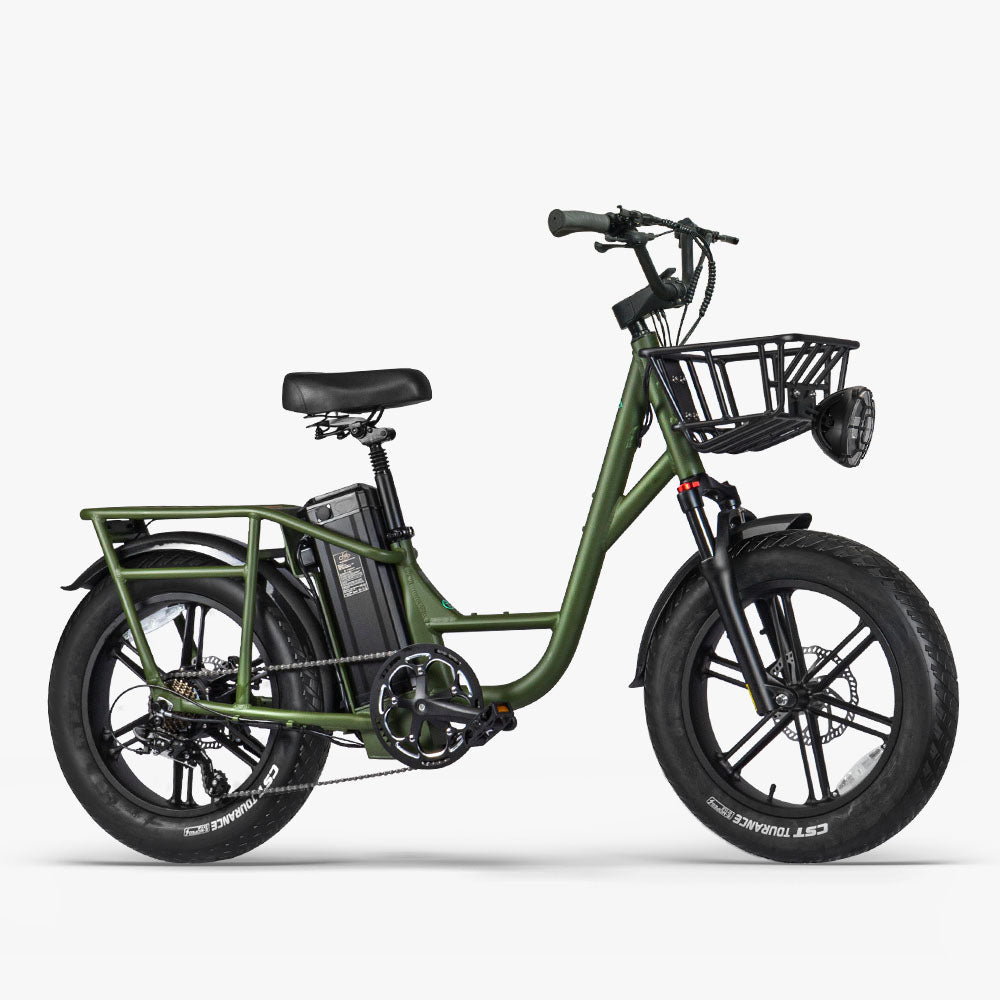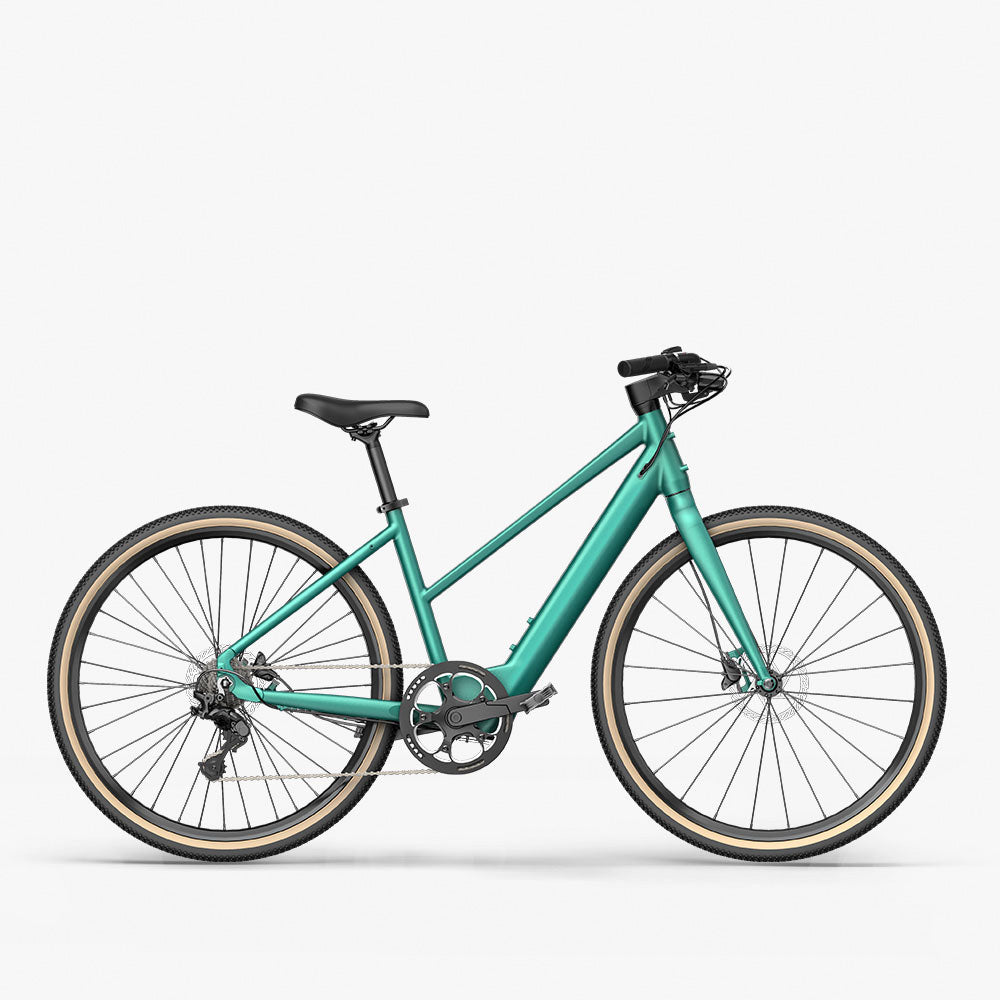How to inflate a bike tire might seem like a simple task, but when it comes to electric bikes (e-bikes), there are a few more things you need to keep in mind. E-bikes often have different types of tires depending on their model, and understanding the correct way to inflate these tires can make a huge difference in your riding experience. In this guide, we'll walk you through the entire process of inflating e-bike tires while providing an e-bike tire pressure guide, tips on how to choose the right pump, and more. Whether you’re a seasoned rider or a beginner, this guide is for you.
Why Proper Tire Inflation Matters
One of the most overlooked aspects of e-bike maintenance is tire inflation. Keeping your tires properly inflated is crucial not only for a smooth ride but also for your safety and the longevity of your bike. Under-inflated tires can lead to poor handling, increased wear, and even flats, while over-inflated tires may reduce traction and cause discomfort while riding.
Benefits of Proper E-Bike Tire Inflation
Safety: Properly inflated tires ensure better traction and handling, especially on rough or wet surfaces.
Performance: Correct tire pressure enhances the overall performance of your e-bike, allowing you to ride longer distances with less effort.
Durability: Well-inflated tires are less prone to damage, punctures, and wear. This can extend the life of your tires and help you avoid costly repairs.
Energy Efficiency: The right tire pressure reduces rolling resistance, which can help preserve the battery life of your e-bike.
How to Inflate E-Bike Tires: Step-by-Step
Step 1: Check the Recommended Tire Pressure
Before inflating your tires, you need to know the recommended tire pressure. Most e-bike manufacturers will list the proper tire pressure on the sidewall of the tire or in the user manual. For example, Fiido e-bikes typically have different pressure recommendations for their various models like fat bikes, folding bikes, and cargo bikes.
Step 2: Prepare Your E-Bike Tire Pump
There are different types of pumps available, from manual pumps to electric ones. For e-bikes, it’s generally better to use a high-quality pump that allows you to measure pressure accurately. Consider these e-bike tire pump tips:
Electric pumps are faster and more convenient, especially if you frequently ride long distances.
Manual pumps (such as floor pumps or portable mini-pumps) are useful for quick inflation on the go.
Make sure your pump fits the valve on your e-bike tires. Most e-bike tires will have either a Presta or Schrader valve.
Step 3: Inflate the Tire to the Recommended Pressure
Once you have your pump ready, attach it to the valve and inflate the tire. Pay attention to the pressure gauge on the pump to ensure you are inflating to the recommended PSI (pounds per square inch) or BAR (a different pressure unit). Over-inflating or under-inflating the tire can affect performance and safety.

E-Bike Tire Pressure Guide
Different types of e-bikes require different tire pressures. The Fiido range of e-bikes offers a wide variety of models, each designed for different riding conditions and needs. Let’s take a look at some of the most popular Fiido models and their recommended tire pressures.
1. Fiido Fat Bike
Fat bikes, like the Fiido M1 Pro, are designed for off-road use and rough terrains. These bikes feature wider tires, which need lower pressure for better traction on loose surfaces like sand or snow.
Recommended Pressure: 30PSI
Why: Lower pressure allows for better shock absorption and traction, which is essential for off-road stability.
Fiido M1 Pro Fat Tire Electric Bike
The most cost-effective fat tire electric bike off road.
2. Fiido Folding Bike
The Fiido L3 is an example of a folding e-bike. These bikes are built for portability and urban commuting.
Recommended Pressure: 35-45PSI
Why: Higher pressure is ideal for smoother roads and city commuting. It reduces rolling resistance and ensures a more efficient ride.
Fiido L3 Long Range Electric Bike
Longest range folding electric bike under $1000.
3. Fiido Cargo Bike
Cargo e-bikes like the Fiido T1 pro electric bike are built to carry heavy loads. Because of this, maintaining proper tire pressure is crucial for handling and safety.
Recommended Pressure: 30PSI
Why: The rear tire often carries more weight, so it needs to be slightly more inflated to handle the load effectively.
Fiido T1 Pro Utility Electric Bike
Powerful utility electric bike with 93 miles range.
4. Fiido E-Gravel Bike
For riders who love speed and comfort, the Fiido E-Gravel C22 Lightweight Electric Bike is a great choice. It requires tire pressure that balances comfort with control on mixed surfaces.
Recommended Pressure: 50-75PSI
Why: This range allows for a good grip on loose unpaved roads while still providing enough speed and efficiency on harder surfaces.
Fiido E-Gravel C22 Electric Bike
Urban communter electric bike with torque sensor, only 38.5 lbs.
Maintaining the right pressure for your specific e-bike model is essential. By following these guidelines, you can ensure not only a smoother ride but also increase the longevity of your tires.
E-Bike Tire Pump Tips
When it comes to inflating e-bike tires, not all pumps are created equal. While you can use any standard bike pump, investing in a pump specifically designed for e-bike tires can make the process easier and more efficient. Some pumps come with pressure gauges that allow for more accurate inflation, while others are electric and do the job quickly with minimal effort.
Here are a few tips:
Use a pump with a built-in gauge: This helps you monitor the pressure and avoid over-inflation or under-inflation.
Consider a portable pump: If you’re often on the go, a portable pump can be a lifesaver in case of emergencies.
Electric pumps for convenience: These are perfect for home use, especially if you don’t want to tire yourself out manually pumping air.
Maintaining E-Bike Tire Pressure
Once your tires are properly inflated, it’s important to check them regularly. Tire pressure naturally decreases over time, especially with frequent use. Checking your tire pressure before every ride can help you avoid potential problems on the road.
How Often Should You Check Tire Pressure?
Daily commuters should check their tire pressure every few days.
Weekend riders can get away with checking it weekly.
Long-distance riders should check before every ride to ensure optimal performance and safety.
Tire Pressure for Electric Bikes: Common Mistakes to Avoid
When inflating your e-bike tires, there are a few common mistakes that people often make:
Over-inflating the tires: While it may seem like higher pressure equals faster rides, over-inflating can lead to a harsh ride and less traction.
Under-inflating the tires: Low pressure increases rolling resistance and puts you at risk for flats, not to mention the added strain on your motor and battery.
Using the wrong pump: Make sure you’re using a pump that’s compatible with your valve type (Presta or Schrader).
By avoiding these mistakes, you can ensure a safer, more efficient ride.
Key Steps to Inflating E-Bike Tires at Home
Prepare your pump and ensure it matches the valve type.
Check the recommended pressure for your e-bike’s tires.
Inflate carefully, monitoring the pressure as you go.
Test the tire’s firmness after inflating to make sure it feels right for your ride.
Electric Bike Tire Inflation Guide: Safety Tips
Inflating your tires might seem simple, but safety should always come first. Always double-check your tire pressure before heading out, especially if you’re planning a long ride or riding in challenging conditions. Also, remember that tire pressure may change with temperature fluctuations, so it’s essential to adjust as necessary.
FAQ: Frequently Asked Questions
1. How often should I inflate my e-bike tires?
It’s best to check your tire pressure before every ride. Over time, even well-inflated tires can lose air, especially with regular use.
2. What is the best way to inflate e-bike tires at home?
An electric pump with a built-in pressure gauge is the easiest and most accurate way to inflate your e-bike tires at home. Manual pumps can also work, but they require more effort and attention to detail.
3. Can I use a regular bike pump to inflate e-bike tires?
Yes, you can use a regular bike pump as long as it’s compatible with your tire valve (Presta or Schrader). However, using an electric pump designed for e-bikes can save time and effort.
4. What happens if I over-inflate my e-bike tires?
Over-inflating your tires can lead to a harsher ride, reduced traction, and increased wear on your tires. It can also make the tires more prone to punctures.
5. Why is proper tire pressure important for e-bikes?
Proper tire pressure ensures better handling, safety, and performance. It can also help extend the life of your tires and reduce the strain on your e-bike’s motor and battery.
By following this guide, you can keep your e-bike tires in top shape, ensuring safer and more enjoyable rides. Happy cycling!

















